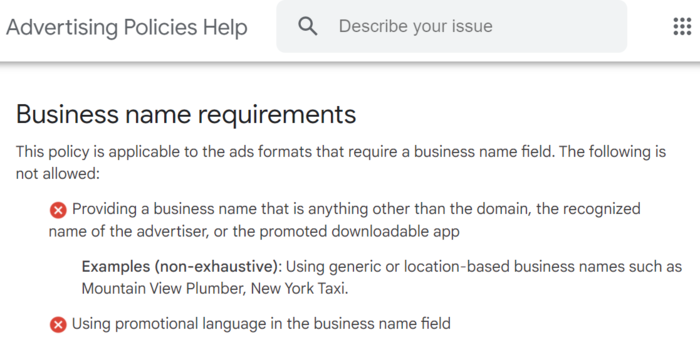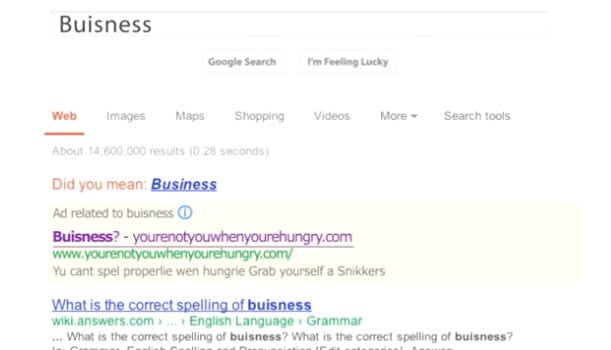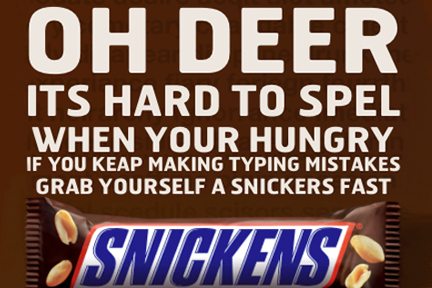
How to Market Without Cookies
For several years, many digital marketing teams relied on cookies for marketing.
However, everything is about to change.
Mozilla Firefox and Apple Safari already block third-party cookies, and recently, Google revealed it would no longer support cookies on ad networks and its Chrome browser.
What does this mean for marketing teams, and what can you do to ensure your business keeps running smoothly when you are marketing without cookies? Let’s find out.
Why Are Third-Party Cookies Going Away & Why Does it Matter?
Whenever you use the internet, especially on browsers like Chrome, your actions are tracked through cookies.
These cookies can help marketing teams understand user behaviors and ad performance, but they may feel like an intrusion of privacy for many users.
By blocking these cookies, users can increase their privacy and security. Browsers like Firefox, Safari, and Brave have already started doing this. Google will also begin phasing out third-party cookies from its browsers to strengthen user privacy and promote itself as a secure search engine.
This represents a considerable change for marketers who heavily relied on cookies for their ad campaigns.
When creating paid ad campaigns on browsers and social media platforms, you need customer details to customize the copy. Marketing without cookies means you’d have to rely on first-party data (more on that below) rather than third-party cookies.
Now Google is launching “The Privacy Sandbox” as a response to the cookieless future. Here data will be stored anonymously to form a middle ground where companies can obtain customer data without intrusive cookie tracking.
Beyond this, there are various ways to market without cookies. Below, we’ll discuss some of the most effective strategies and offer tips for marketing without relying on the use of third-party cookies.
4 Tips to Prepare for Cookieless Marketing
Your marketing campaigns don’t have to suffer because you don’t have access to third-party cookies.
Using the strategies and tips below, you can learn to leverage tools like first-party data to increase the effectiveness of your marketing efforts without depending on cookies.
Turn on Google Analytics 4
An upgraded version of Universal Analytics, Google Analytics 4 supports both app and website-based tracking. It helps if you use both formats (app and website), as most businesses do today.
Whether you already run GA for an existing website or you want to create a different account for a new site, turning on Google Analytics 4 is simple. Here’s a detailed guide to help you get started.
Start Gathering First-Party Data
Third-party cookies are blocked, but marketing teams can continue to collect first-party data. This means you can still use data from email sign-up forms or newsletters, surveys, and other direct methods.
The biggest benefit of working with first-party data is you own the data. You don’t have to worry about buying it from someone else or losing the right to use it.
The second benefit is first-party data tends to be more accurate than third-party cookies because you know your customers and have the tools to figure out exactly where the data came from.
Another massive benefit is your competitors don’t have the same data. When you buy third-party data, there may be another company, most likely your competitor, that buys the same information.
Sounds exciting? Here are some ways to collect first-party data to help you get started:
- online surveys
- sign-up forms
- newsletters
- community polls
- SMS answers
- mobile notification responses
- direct mail (offline post), etc.
These are some of the tools marketers typically use to gather first-party data from both new visitors and seasoned users. You may not want to start using all of them at once as it could overwhelm your customers.
Instead, try one or two approaches first. See how your audience responds to it. Are they receptive to your methods, or do they need a different approach? Experiment with different techniques to see what best suits your business model.
Invest More in Market Research
Market research goes hand-in-hand with collecting first-party data. When marketing without cookies, you need to know who your audience is.
Understanding their needs and pain points will help you tailor your campaigns to suit their needs without having to rely on external cookies data.
If you’re new to this, here are some ways to get started with market research:
- Launch a targeted survey.
- Collect questions and feedback from your current users.
- Work with analytics to understand what’s working and what isn’t.
- Hold focus groups with incentives for participants.
- Observe how customers interact without interfering with their actions.
- Post simple polls in community forms to get a broad view of audience interests.
- Leverage the power of social media to understand what your target market wants.
No matter which method you choose, the bottom line is this: Start investing more in market research. Get to know your customers and target market with surveys, buyer personas, and most importantly, constantly testing your findings with A/B testing.
Focus on Personalization
What would you prefer? An email that addresses you by your name, or one that starts with a “hello there!?”
Research says people prefer the first option. Studies show 90 percent of users find personalization appealing and 80 percent of consumers are more likely to make a purchase when brands provide personalized experiences.
If you want to take your marketing efforts to the next level, it’s best to focus on personalization.
Now that you’re already working with first-party data, this will be easier.
Start with using the customer’s name. There are dozens of tools in the market, including ones that work with newsletters to automatically personalize your campaigns.
Then address customer pain points. Get really specific about what bothers them and position yourself as a solution for those problems. This will help customers connect with your brand better.
Here’s an eye-opening graphic about pain points to keep in mind when working on personalization.
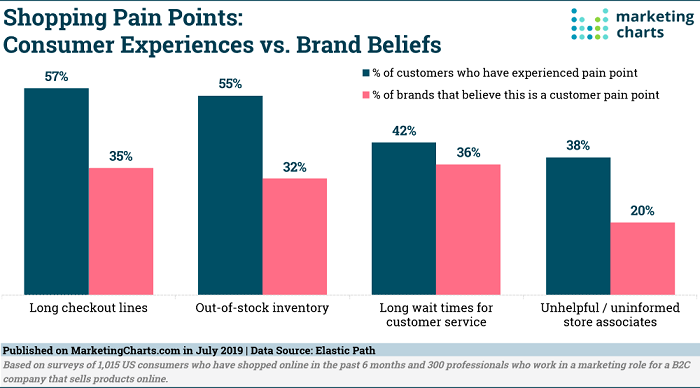
Rethinking PPC: 4 Tips for PPC Marketing Without Cookies
If you’ve ever run online advertising campaigns, you know the best way to get effective results is to target your ads to specific audiences. How can you do that when marketing without cookies? Here’s how.
Use AI-Based Bidding
By analyzing search data, AI-driven bidding determines which keywords and trends generate the most conversions. Then it optimizes your bids in real-time, maximizes efficiency for your ad spend, and improves the return on your investment.
Here’s an example from Google.

The Smart Bidding feature of Google AI-based bidding provides bid strategies based on conversions. As a result, you can make targeted bid decisions for every auction in which your ads are entered.
What does it mean? Simply speaking, it means you can get more reliable results without resorting to guesswork.
Such automated bid decisions are based on data that includes information about the device, the current location, the time of day, remarketing list, enabled languages, operating system, and other relevant details.
Still confused about AI-based bidding? Don’t worry. Here’s a Google guide to help you get started.
Reconsider KPIs
Key performance indicators (KPIs) measure progress towards achieving ad campaign goals, so the success of your PPC marketing campaign often depends on what you’re actually measuring.
Here’s where it gets interesting. When marketing without cookies, you may have to reconsider these KPIs to better align with your business goals. For instance, you may want to pay more attention to conversion numbers (how many users convert vs. how many users bounce from your homepage).
Cost per acquisition is another important KPI you need to consider to ensure your ad campaigns are profitable in the long run.
Here’s a thorough representation of evolving KPIs to help you plan your cookieless marketing strategies more effectively.
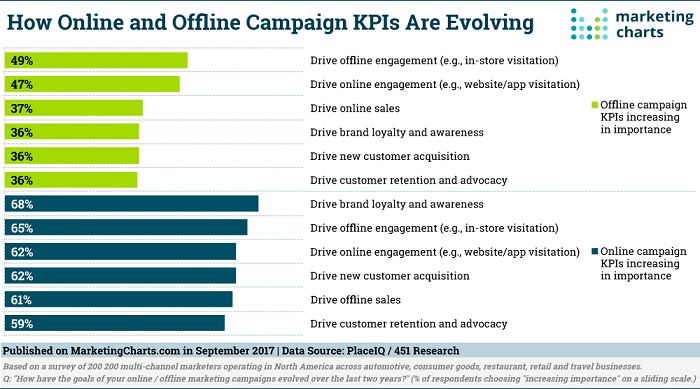
Fully understanding and leveraging these KPIs can help you make better marketing decisions, especially when you’re navigating this new territory of a cookieless marketing future.
Use Contextual-Based Advertising
Now that third-party cookies are out of the picture, you may be wondering: How can I know which ads to place where if I don’t have data about consumer behavior?
That’s where contextual advertising comes in. In context-based advertising, ads are placed on web pages according to the website’s content. For example, a tech blog may display ads about computer accessories, while a vegan-living website may display ads about vegan food products.
Look at the NYT Books section, for another example.
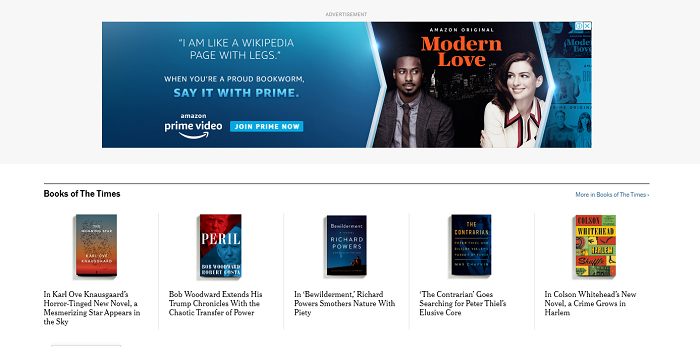
The Amazon Prime Video ad copy literally talks about being a “bookworm.” This is contextual advertising as users who read the NYT Books section are obviously readers in some capacity.
One more: Look at WSJ’s Life and Work section. It has a classic lifestyle content ad, considering users visiting this section have already shown an interest in lifestyle content.

Target Based on Location and Time
Say you want something more personal than contextual advertising. Then consider targeting users based on their current location and time of the day.
This can be as simple as “geotargeting,” where you change the ad copy to suit users from different regions. You see this in most search results.
For example, if you look up “coffee shops” from New York, you’ll see ads and search results for coffee shops in NY, even if the same brand has a franchise elsewhere.
The most interesting part? It doesn’t even have to be a huge brand. As long as the business has some web presence and works with geotargeted ads, it’ll show up for location-based searches.
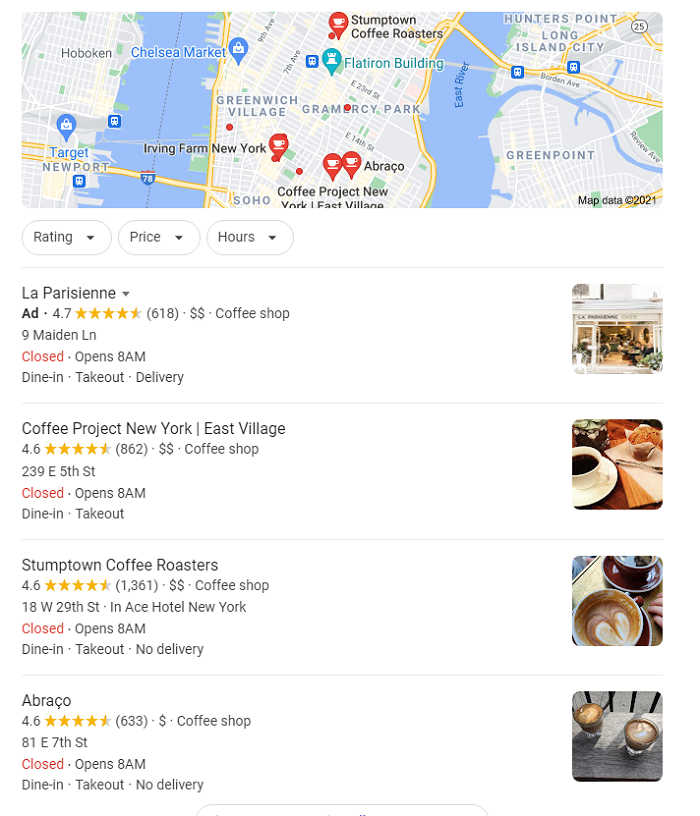
Time-based marketing is similar, with the only difference being you’re now using time data to personalize your copy. Imagine getting an email greeting you with a Good Morning when it’s actually morning in your region. Feels good, doesn’t it?
This approach can also be useful to determine when ads will appear for users.
Say you want to market coffee products. It’s better to show these ads in the morning when users are considering buying coffee, rather than at night when they are more likely to avoid it.
Frequently Asked Questions About Marketing in a Cookieless Future
Here are some frequently asked questions about marketing without cookies.
Why is Google getting rid of third-party cookies?
Google’s plan to phase out third-party cookies comes as part of a comprehensive strategy to create a privacy sandbox so users can be tracked (for marketing purposes) while maintaining their privacy.
How will the end of third-party cookies impact marketing?
Most marketing teams were used to using third-party cookies for launching marketing campaigns. Losing access to those would mean you have to rethink your strategy, find better ways to collect information (first-party data), and personalize ad campaigns without relying on cookies.
What is the Google Privacy Sandbox?
Google has launched the Privacy Sandbox initiative to develop web standards that allow websites to access user information without compromising privacy. In essence, it facilitates online advertising without relying on third-party cookies.
What does cookieless marketing mean?
Cookies are bits of data that contain identifiers for consumers (personal and usage information), so cookieless marketing relies less on them in comparison to other marketing approaches. This involves using first-party data and personalization to increase the effectiveness of ad campaigns.
{
“@context”: “https://schema.org”,
“@type”: “FAQPage”,
“mainEntity”: [
{
“@type”: “Question”,
“name”: “Why is Google getting rid of third-party cookies? “,
“acceptedAnswer”: {
“@type”: “Answer”,
“text”: ”
Google’s plan to phase out third-party cookies comes as part of a comprehensive strategy to create a privacy sandbox so users can be tracked (for marketing purposes) while maintaining their privacy.
”
}
}
, {
“@type”: “Question”,
“name”: “How will the end of third-party cookies impact marketing? “,
“acceptedAnswer”: {
“@type”: “Answer”,
“text”: ”
Most marketing teams were used to using third-party cookies for launching marketing campaigns. Losing access to those would mean you have to rethink your strategy, find better ways to collect information (first-party data), and personalize ad campaigns without relying on cookies.
”
}
}
, {
“@type”: “Question”,
“name”: “What is the Google Privacy Sandbox? “,
“acceptedAnswer”: {
“@type”: “Answer”,
“text”: ”
Google has launched the Privacy Sandbox initiative to develop web standards that allow websites to access user information without compromising privacy. In essence, it facilitates online advertising without relying on third-party cookies.
”
}
}
, {
“@type”: “Question”,
“name”: “What does cookieless marketing mean? “,
“acceptedAnswer”: {
“@type”: “Answer”,
“text”: ”
Cookies are bits of data that contain identifiers for consumers (personal and usage information), so cookieless marketing relies less on them in comparison to other marketing approaches. This involves using first-party data and personalization to increase the effectiveness of ad campaigns.
”
}
}
]
}
Cookieless Marketing Conclusion
Marketing without cookies may seem like a daunting task at first. However, it doesn’t have to be so hard.
Using the strategies and tips outlined above, you can improve your ad campaigns without relying on third-party cookies to find marketing success.
The best part is these methods give you more control and accuracy compared to cookie-based marketing, which has you sharing data with your competitors.
Which strategy will you try for marketing without cookies?


